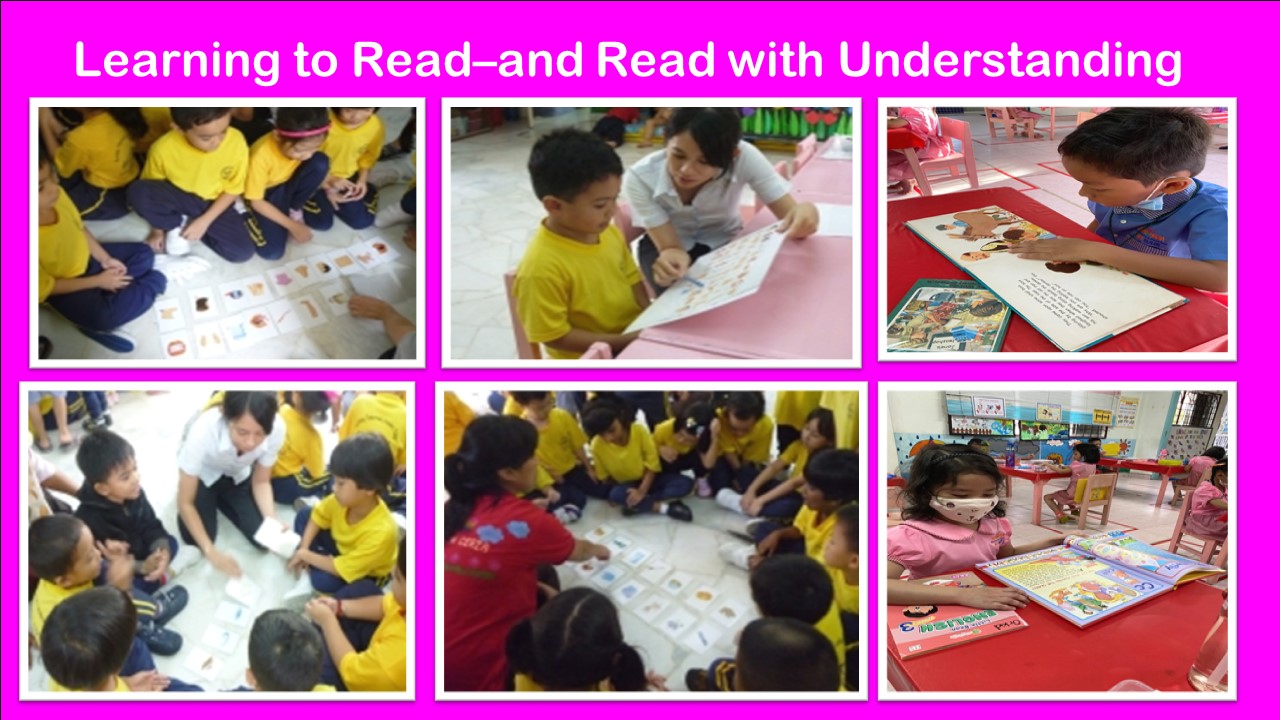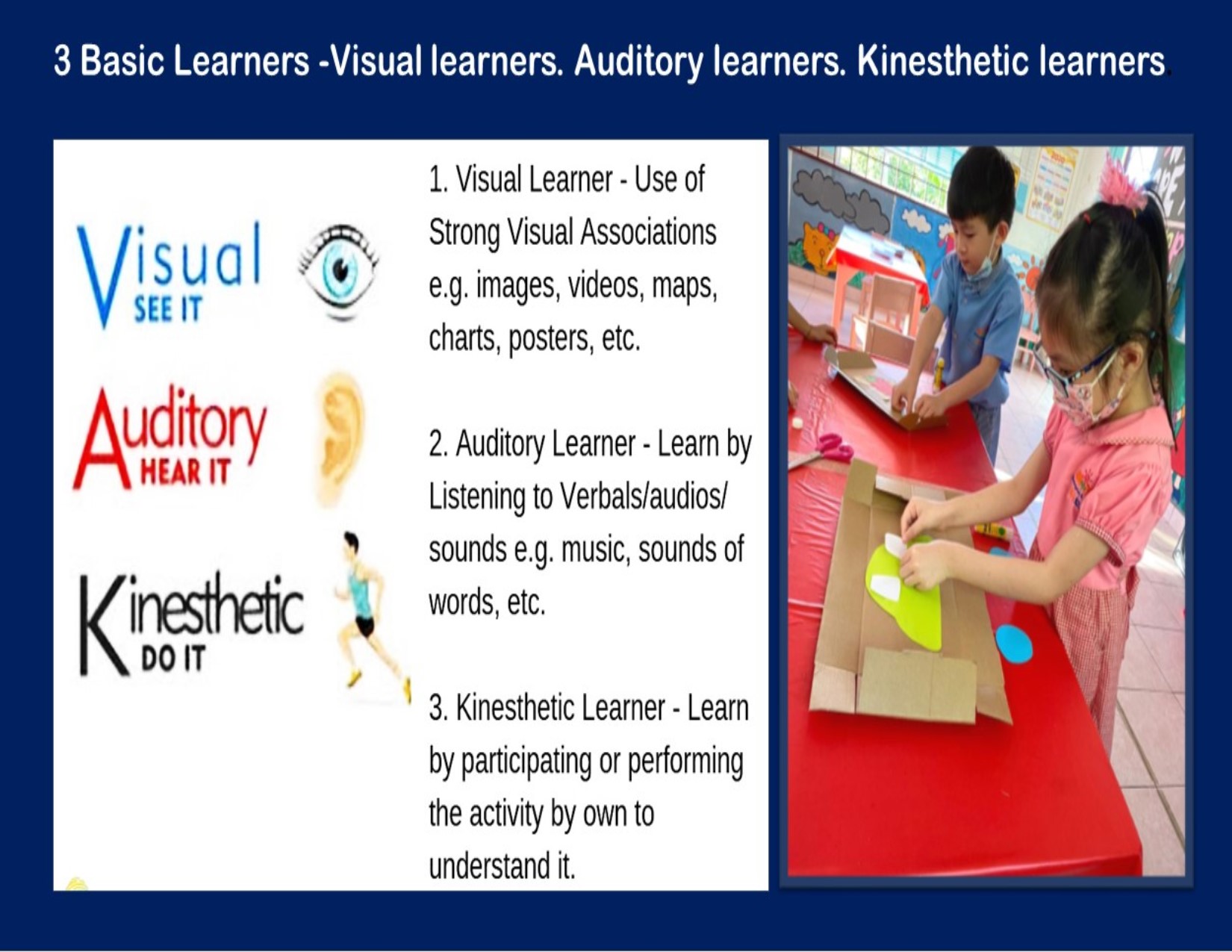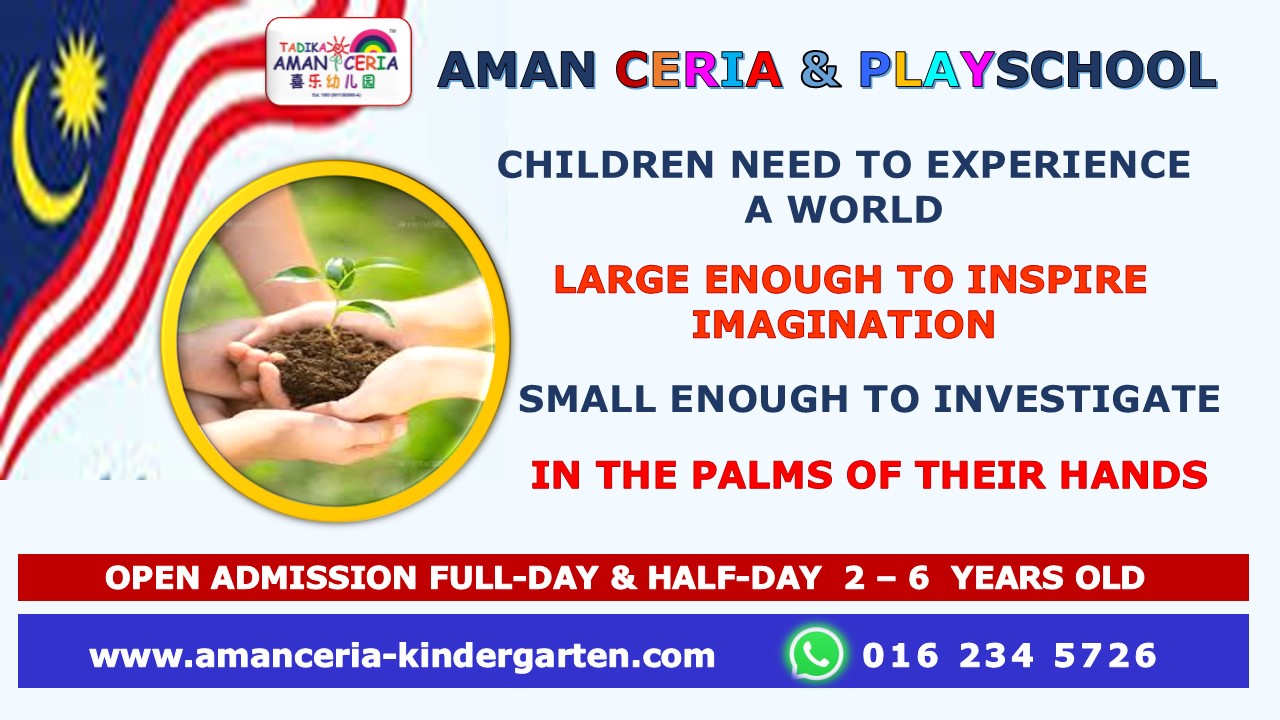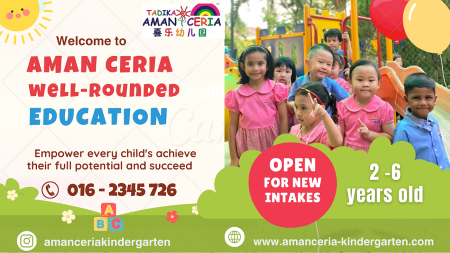3 Basic Learners
Children Succeed Through Different Learning Styles


Three Basic Learners
Find out if your child prefers to read by seeing, hearing,
or doing (role play)
Auditory learners
• Auditory learners remember by reading out loud, like to have things explained to them.
• Auditory learners love repetition and rhyme.
• They will probably memorize many stories, song lyrics, and nursery rhymes.
• They can recite books you've read to them.
Visual learners
• Visual learners easily remember visual details and prefer to see what they are reading.
• Visual learners tend to love drawing, painting, bright colors and beautiful picture books.
• They match and compare the letter shapes in the alphabet or story books.
• Visual learners have strong visual skills, they can benefit from auditory and tactile stimulation.
Tactile-Kinesthetic learners
• Kinesthetic or tactile readers prefer activities that allow them to do what they are reading about.
• Tactile learners like to move around when reading or listening.
• The tactile-kinesthetic learners remember best the things they experience.
• Kinesthetic learning involves the use of the whole body rather than just hands-on.
• Studying with soft music in the background might suit the kinesthetic readers.

How to Help Children Read to Learn?
Reading readiness begins early in children's development. It is often referred as the earliest stage of informal reading that involve young children.
Learning to read is an ongoing developmental process. To be able to read is important for success in school and throughout life.
• Although we all want our children to read early, the reading readiness skills must be well established first. Reading does not happen naturally without adult guidance.
• Children must first have knowledge of the oral language and its vocabulary. Talking and interacting with your children, help improve their language skills.
• Letters of the alphabet are the building blocks of literacy. The more familiar these letters and their associated sounds, the easier will be for your children to learn to read.
• Children need to recognize that letters put together to make sounds, and sounds put together to make words. (phonemic awareness) The best thing to prepare children with reading readiness is to read aloud to them.
• Reading materials need not be limited to story books. Parents can use magazines, newspapers, any other reading materials. It's important to consider children's developmental level when choosing pre-reading materials.
Helping Children Learn to Read
While reading out, point to the words that will help your children identify them.
Regular experiences with a rich variety of books and reading materials, allow your children to gain an understanding of how print works.

• Read together every day- Read nursery rhymes to your children, play rhyming games and singing songs are important ways to stimulate reading readiness.
• Point out print everywhere -Talk about the written words you see in the world around you. Introduce new words whenever you can and play word games together.
• Be interactive -While reading a story, stop once in a while to ask questions, about the characters in the story. Encourage your children to tell the story in their own words.
• Use pictures clue to guide them. Praise children for their attempts. Give them lots of encouragement. Children will be encouraged to move forward in their abilities to read. Our goal is to strengthen their understanding of the story elements.
• Read it again and again - Children's desire to feel successful about reading will be motivated to choose the same book and reread stories multiple times.
• Build your child's vocabulary - Make reading readiness a part of as many activities as possible - reading signs, letters, posters, banners keep the activity fun and inculcating the reading habit.
• Cooking activities reinforce reading - Most children think it's fun! Reading out the recipes stimulates their interest to want to learn to read.
• Making Play-dough or cookie dough by rolling out rope-shaped pieces. So children can form into shapes of letters, say the letter and its sound.
• Interesting reading activities -Printing your children's name on a piece of paper. Put a piece of tracing paper over it and show them how to trace their name.
• Encourage all efforts to read. Go to the library together and let your children pick out the books they are interested in.
• Talk about writing - Mention to your children how we read from left to right and how words are separated by spaces.

Children learn differently - 3 Basic Learners






